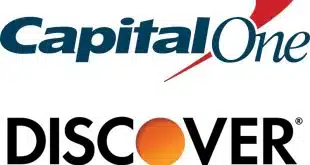Consumer usage of prepaid and gift cards declined last year, according to a new report from Javelin Strategy & Research. Javelin estimates that the percentage of U.S. adults who had used a prepaid or gift card in the preceding 12 months fell from 66% in 2008 to 61% in 2009. That's about 11 million fewer users, according to Javelin. Most other recent market surveys have shown virtually uninterrupted growth in the booming prepaid market (Digital Transactions News, March 10). The Javelin survey, which was based on findings from 3,294 randomly selected consumers last November as well as interviews with executives from numerous industry companies, doesn't contradict that overall trend, according to Beth Robertson, director of payments research. She says the recession caused consumers to reduce discretionary spending through much of last year, which affected the prepaid card sector and especially its big gift card niche. “We believe that this is a temporary thing,” says Robertson, noting that prepaid card executives told Javelin they started to see an uptick in volumes late in the year. The decline in discretionary spending also took a big bite out of credit card usage, according to recent quarterly reports from Visa Inc. and MasterCard Inc. (Digital Transactions News, Feb. 4). Pleasanton, Calif.-based Javelin predicts that the recovery in prepaid and gift card usage that providers began to see toward the end of 2009 will continue this year. Online volumes are especially poised to grow as the number of gift and other prepaid cards with Visa, MasterCard, Discover, and American Express logos proliferates. Javelin estimates that online purchase volumes in 2009 for prepaid cards were $12 billion and, separately, $2 billion for gift cards, accounting for 5.8% and 0.8% of total online retail purchases, respectively. By 2014, prepaid cards will capture $38 billion in online charges for 9.3% of the Internet retail market, while gift cards will see charge volume of $6 billion for a 1.4% market share. “One of the main factors is just that more prepaid and even gift cards are beginning to be available that have a network brand on them,” says Robertson. “We're leading to an area where prepaid and gift can be used much more ubiquitously.” Javelin asserts that new government regulations on gift and prepaid cards could actually generate more consumer usage of the cards. The Credit CARD Act Congress passed last May contained a provision to regulate some gift card fees and provisions such as expiration dates. Monthly inactivity fees will be banned. The Federal Reserve in November proposed rules implementing the law that are likely to become final in August. The new regulations will force prepaid card players to reexamine their business models, but they'll still be able to generate fee revenue through other channels, according to Robertson. Javelin suggests that usage of prepaid and gift cards might get a boost from the new regulations if they make pricing clearer and increase consumer trust in the products. “I think there was some negative consumer experience with some cards that will be eliminated,” Robertson says. While new regulations will force greater consistency in card fees and communications and probably encourage more product differentiation, they also could add to the pressure to consolidate as players in the fragmented prepaid card industry seek to reduce costs, according to Javelin. Javelin says its consumer findings have a sampling error of plus or minus 1.71 percentage points at the 95% confidence level.
Check Also
Fiserv’s New Fintech Hub and other Digital Transactions News briefs from 4/21/25
Fiserv Inc. announced it will open later this year what it calls a strategic fintech hub …


